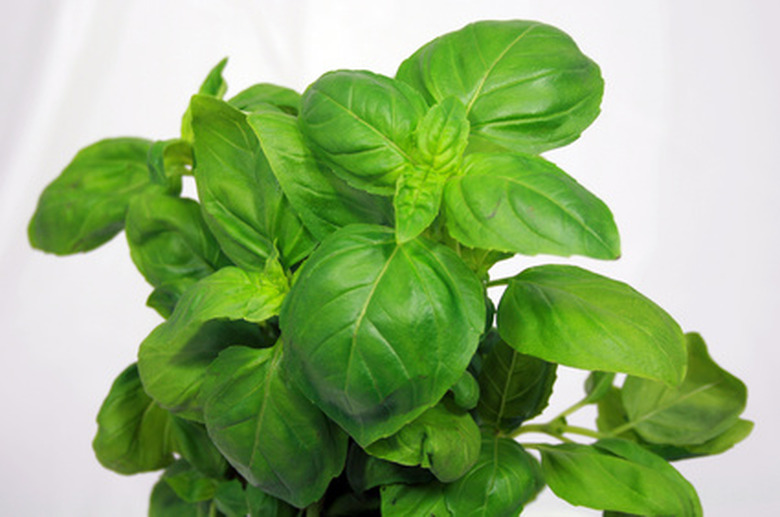How To Troubleshoot Basil Plant Leaves Turning Yellow
All varieties of basil are annual plants, meaning that their life cycle can be completed in a single year. If you remove the flowers and buds as soon as they appear, you can get your basil to continue growing and providing delicious leaves longer than expected. Basil leaves produced after the plant has begun to flower usually taste bitter. Yellow leaves on the basil plant are not uncommon and there are several directions to look in when troubleshooting the causes.
Step 1
Determine how long your basil plant has been growing. Has it already produced flowers, or gone to seed? If so, it is nearing the end of its growth cycle. Basil leaves that are old will turn yellow, indicating no problem other than age.
- All varieties of basil are annual plants, meaning that their life cycle can be completed in a single year.
- If you remove the flowers and buds as soon as they appear, you can get your basil to continue growing and providing delicious leaves longer than expected.
Step 2
Examine the watering conditions for your basil. Do not overwater or underwater, as both situations can create yellow, drooping leaves.
Step 3
Consider the last time you fertilized your basil. Feed it a potassium-rich fertilizer on a regular basis to replace the nutrients it drinks. Feed the basil plant slightly more often if it lives in a pot, as nutrients are washed out of the bottom of the pot every time you water.
Step 4
Make sure the basil is in a comfortable temperature range. Do not let an indoor basil plant sit too near windows when nighttime temperatures approach freezing.
- Examine the watering conditions for your basil.
- Feed the basil plant slightly more often if it lives in a pot, as nutrients are washed out of the bottom of the pot every time you water.
Step 5
Consider the possibility of sun scald. Harden your basil off, if you have been growing it indoors, before moving it outside. the difference in ultraviolet light strength can be too much for your basil plant to handle otherwise.
Tip
Fertilizers are commonly referred to with nitrogen-phosphorus-potassium, or NPK numbers. NPK numbers are written as N-P-K on a package, with a number representing the percentage of that nutrient present in the fertilizer. Micronutrients are usually also part of fertilizers, but are not listed in the same way. Pests may be present on or near your basil. However, unless you notice holes in your leaves or problems other than yellow leaves, they are probably not the cause of yellowing leaves. To harden off your basil, bring it outdoors for an hour in the middle of the day, then bring it back indoors. Continue this process, leaving it outside for an hour or two longer each time.This acclimates the basil to the stresses of living outside. Only attempt this process when outside temperatures are warm, and do not start it if storms are predicted in your local forecast.
